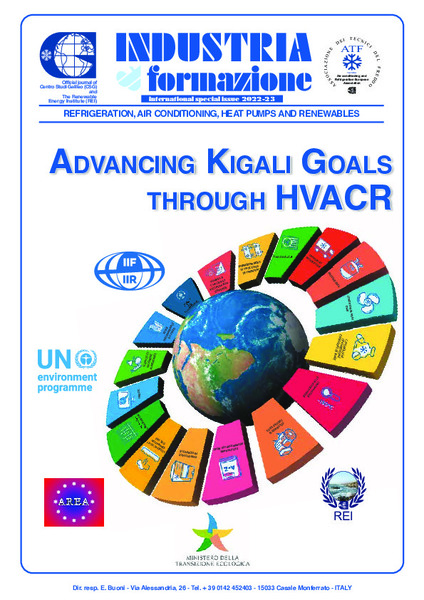| dc.contributor | Law Division | en_US |
| dc.contributor.author | United Nations Environment Programme | en_US |
| dc.contributor.author | American Society of Heating, Refrigerating and Air-Conditioning Engineers | en_US |
| dc.coverage.spatial | Global | en_US |
| dc.date.accessioned | 2019-06-06T12:08:54Z | |
| dc.date.available | 2019-06-06T12:08:54Z | |
| dc.date.issued | 2019 | |
| dc.identifier.uri | https://wedocs.unep.org/20.500.11822/28407 | |
| dc.description | Modern life relies significantly on applications and systems of refrigeration and air-conditioning. Nowadays it is almost impossible to
find a building or facility without cooling, heating, or chilling applications. The first half of the 20th Century saw advancements in
chemistry and mechanical engineering; with this came the development of “fluorinated refrigerants”. As a result, the use of
refrigeration and air-conditioning expanded exponentially to cover all aspects of life and in different types of buildings and facilities
e.g. residential, commercial, industry, and even transport. It also extended to cover critical sectors of modern life such as health and
telecommunications. | en_US |
| dc.format | Text | en_US |
| dc.language | English | en_US |
| dc.relation.ispartof | OzonAction | en_US |
| dc.rights | Public | en_US |
| dc.subject | REFRIGERATION | en_US |
| dc.subject | OZONE-DEPLETING SUBSTANCES | en_US |
| dc.title | World Refrigeration Day - Refrigerants for Life: How Refrigerants Affect Modern Life | en_US |
| dc.type | Manuals, Guides and Toolkits | en_US |
| dc.type | Other | en_US |
| wd.identifier.sdg | SDG 13 - Climate Action | en_US |
| wd.tags | Ozone | en_US |
| wd.topics | Environmental Governance | en_US |
| wd.identifier.pagesnumber | 1 page | en_US |





